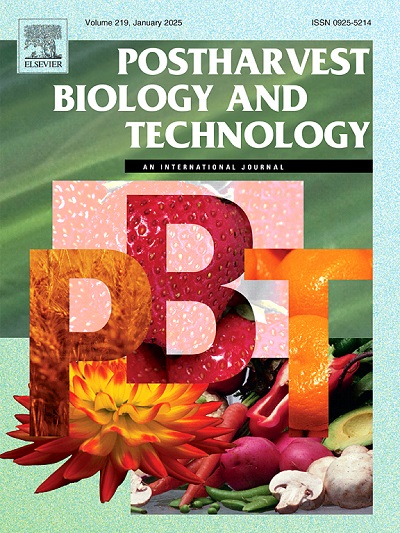Enhancing fruit quality through unraveling the molecular and physiological basis and preventing cracking in jujube (Ziziphus jujuba Mill.)
IF 6.4
1区 农林科学
Q1 AGRONOMY
引用次数: 0
Abstract
Jujube (Ziziphus jujuba Mill.), a ‘woody grain’ tree with medicinal and dietary uses, contains various vitamins, cyclic adenosine monophosphate, and essential trace elements. This study found that precipitation and temperature significantly contributed to jujube fruit cracking, with high temperatures and rainfall damaging the fruit epidermis and leading to swelling and cracking. The fruit bottom and surface areas were most prone to cracking. Differentially expressed gene analysis revealed 1957 DEGs between cracking-resistant and susceptible jujube cultivars, linked to cell wall structure, growth processes, and auxin transport. This suggests resistance may be due to modified cell wall properties, controlled cell growth, and regulated auxin transport. Applying amino acid solution at a concentration of 143 mg/L increased epidermal thickness and reduced the cracking rate by 37.5 %, showing significant anti-cracking effects.
求助全文
约1分钟内获得全文
求助全文
来源期刊

Postharvest Biology and Technology
农林科学-农艺学
CiteScore
12.00
自引率
11.40%
发文量
309
审稿时长
38 days
期刊介绍:
The journal is devoted exclusively to the publication of original papers, review articles and frontiers articles on biological and technological postharvest research. This includes the areas of postharvest storage, treatments and underpinning mechanisms, quality evaluation, packaging, handling and distribution of fresh horticultural crops including fruit, vegetables, flowers and nuts, but excluding grains, seeds and forages.
Papers reporting novel insights from fundamental and interdisciplinary research will be particularly encouraged. These disciplines include systems biology, bioinformatics, entomology, plant physiology, plant pathology, (bio)chemistry, engineering, modelling, and technologies for nondestructive testing.
Manuscripts on fresh food crops that will be further processed after postharvest storage, or on food processes beyond refrigeration, packaging and minimal processing will not be considered.
 求助内容:
求助内容: 应助结果提醒方式:
应助结果提醒方式:


